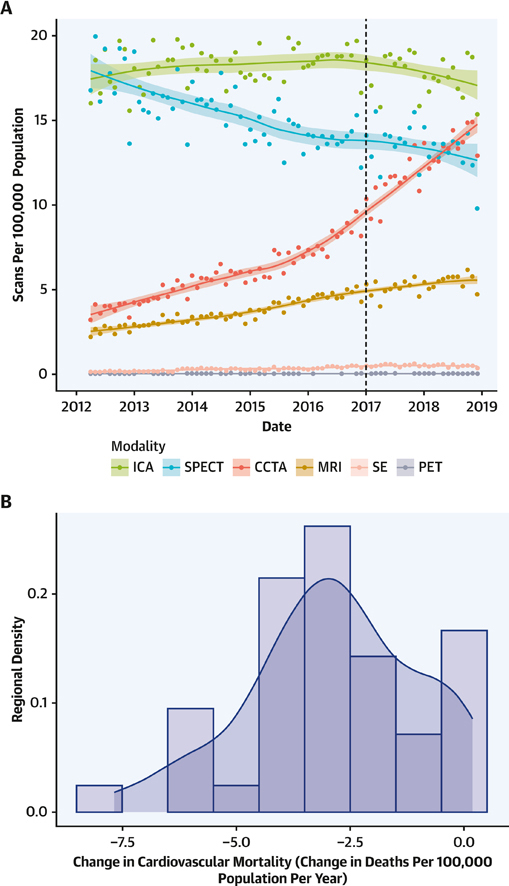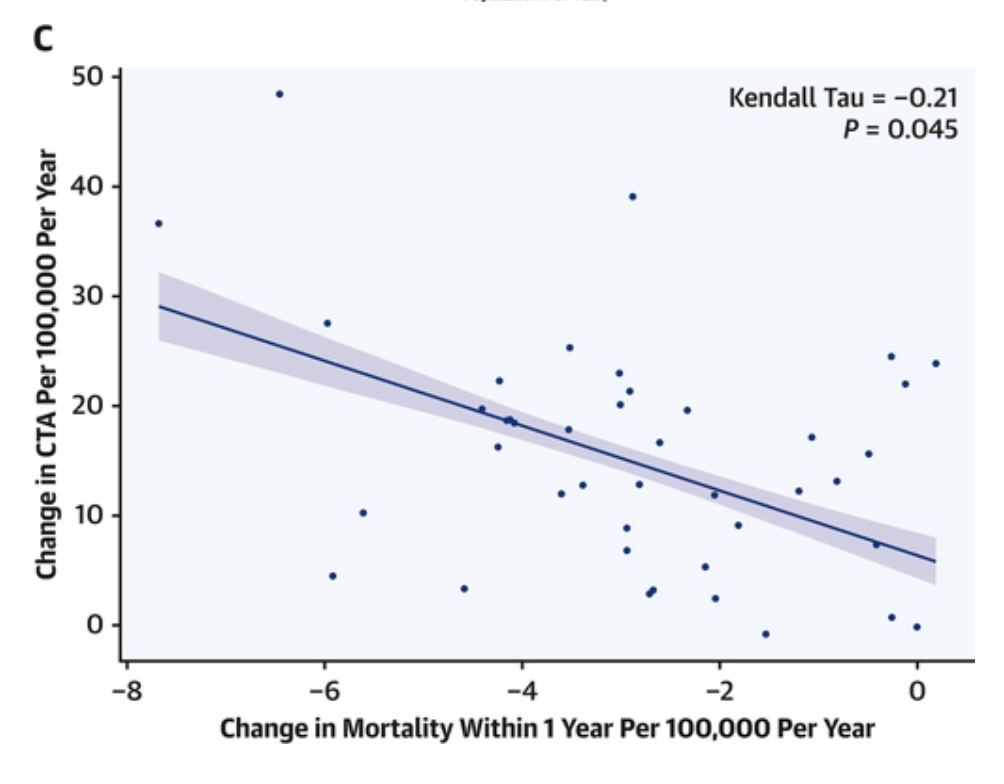Abstract
Original Research: Jonathan R. Weir-McCall, Michelle C. Williams, Anoop S.V. Shah, Giles Roditi, James H.F. Rudd, David E. Newby, and Edward D. Nicol.
Background
In 2016, the National Institute for Health and Care Excellence Clinical Guideline Number 95 (“Chest pain of recent onset”) (CG95) recommended coronary computed tomography angiography (CCTA) as the first-line test for possible angina.
Objectives
The purpose of this study was to determine the impact of temporal trends in imaging use on outcomes for coronary artery disease (CAD) following the CG95 recommendations.
Methods
Investigations from 2012 to 2018 were extracted from a national database and linked-hospital admission and mortality registries. Growth rates were adjusted for population size, with image modality use, cardiovascular hospital admissions, and mortality compared using Kendall’s rank correlation. The impact of CG95 was assessed using an interrupted time-series analysis.
Results
A total of 1,909,314 investigations for CAD were performed, with an annualized per capita growth of 4.8%. Costs were £0.35 million/100,000 population/year with an increase of 2.8%/year mirroring inflation (2.5%/year). CG95 was associated with a rise in CCTA (exp[β]: 1.10; 95% CI: 1.03-1.18), no change in myocardial perfusion imaging, and a potential modest fall (exp[β]: 0.997; 95% CI: 0.993-1.00]) in invasive coronary angiography. There was an apparent trend between computed tomography angiography growth and invasive catheter angiography reduction across regions (Kendall Tau: −0.19; P = 0.08). CCTA growth was associated with a reduction in cardiovascular mortality (Kendall Tau: −0.21; P = 0.045), and ischemic heart disease deaths (Kendall Tau: −0.22; P = 0.042), with an apparent trend with reduced all-cause mortality (Kendall Tau: −0.19; P = 0.07).
Conclusions
Imaging investigations for CAD are increasing. Greater regional increases in CCTA were associated with fewer hospitalizations for myocardial infarction and a more rapid decline in CAD mortality.



